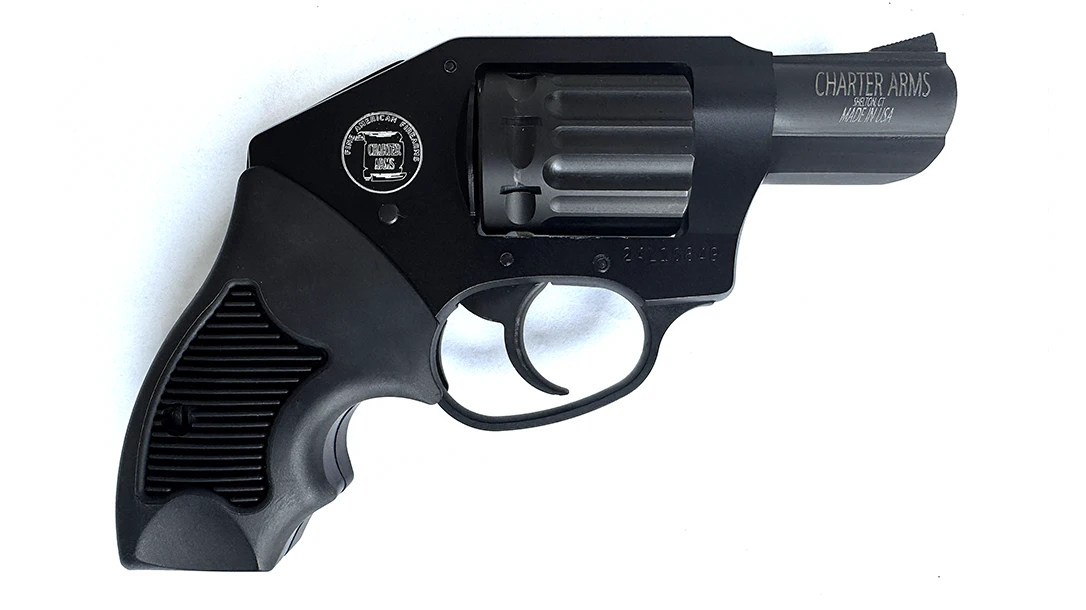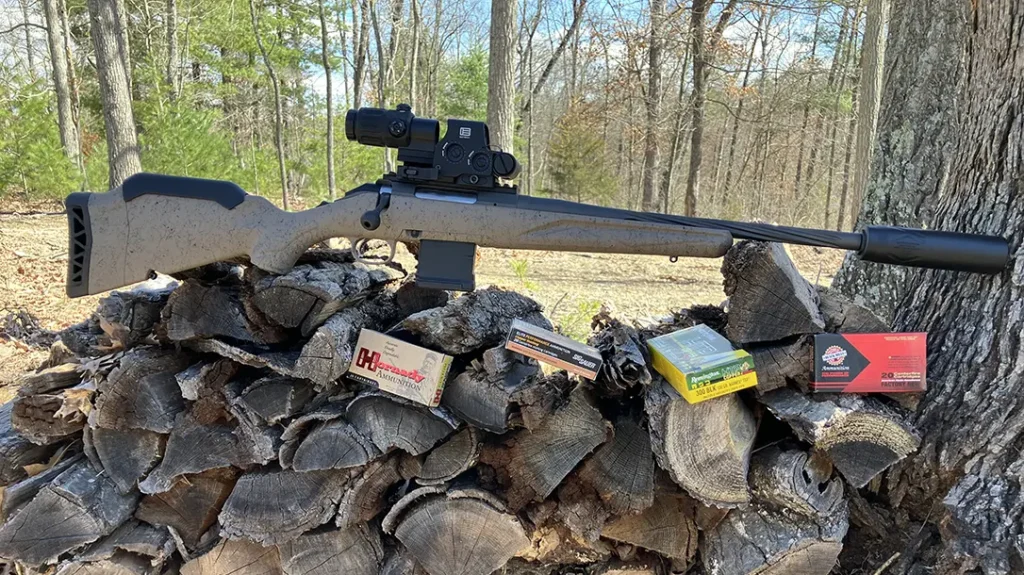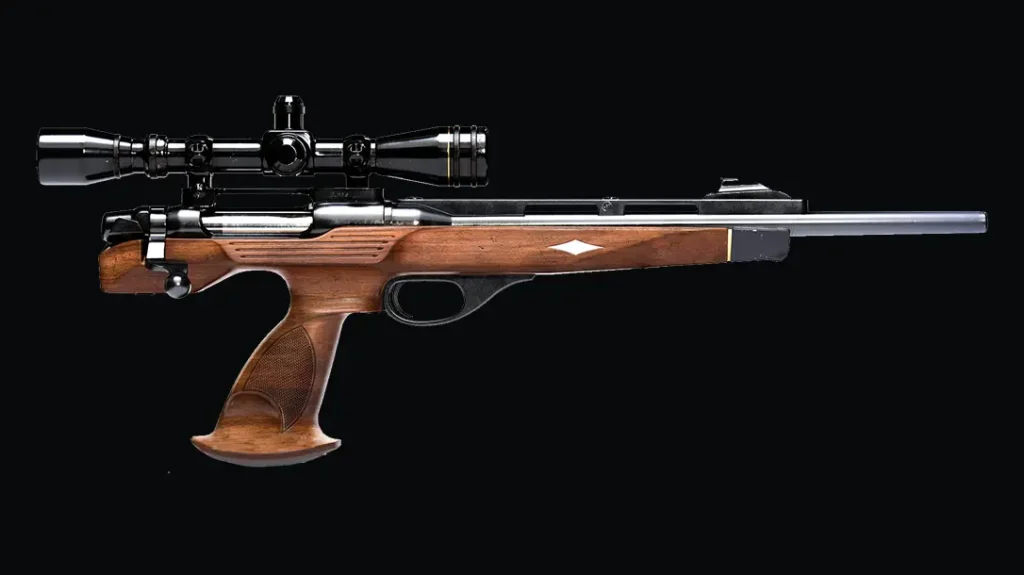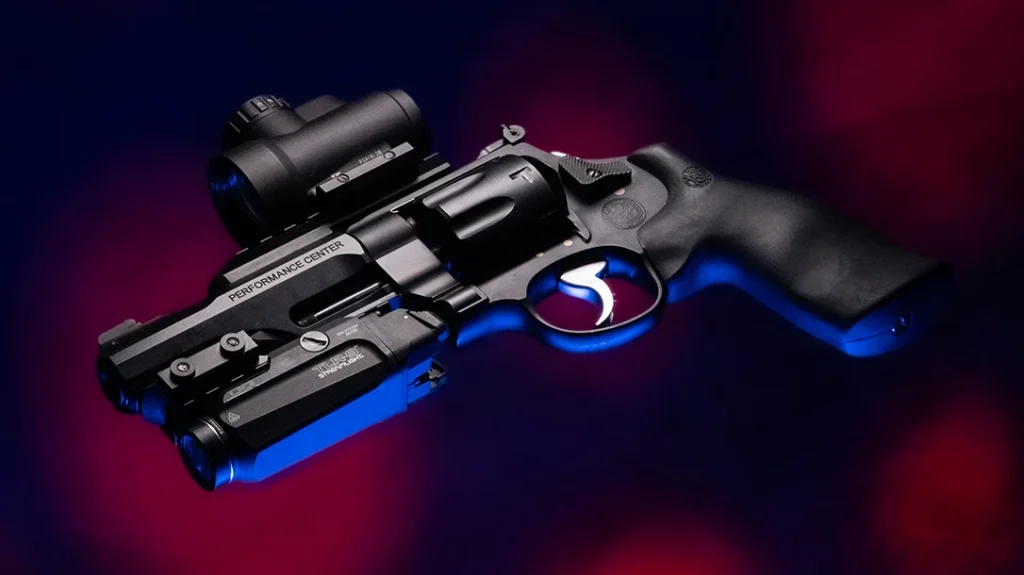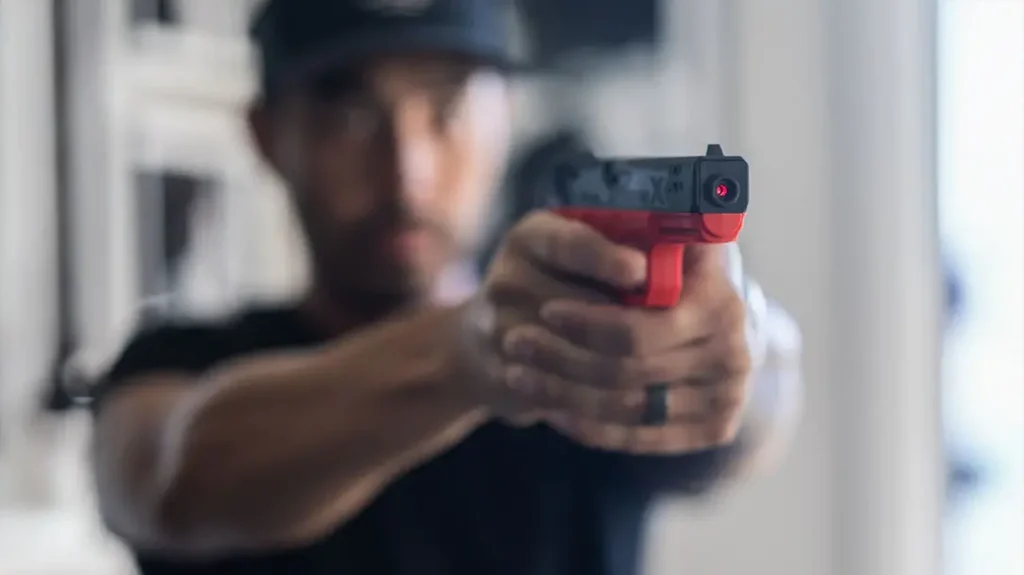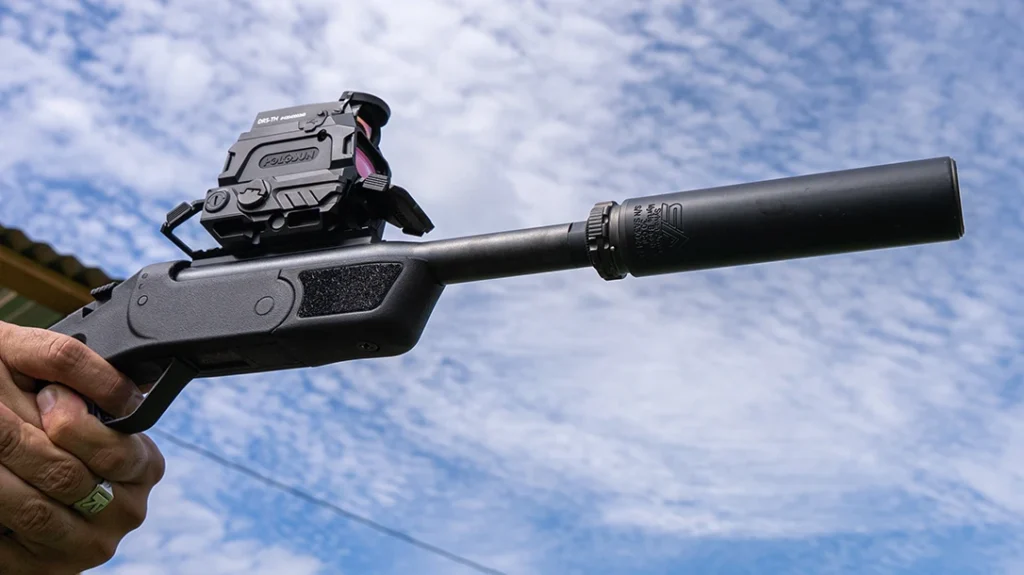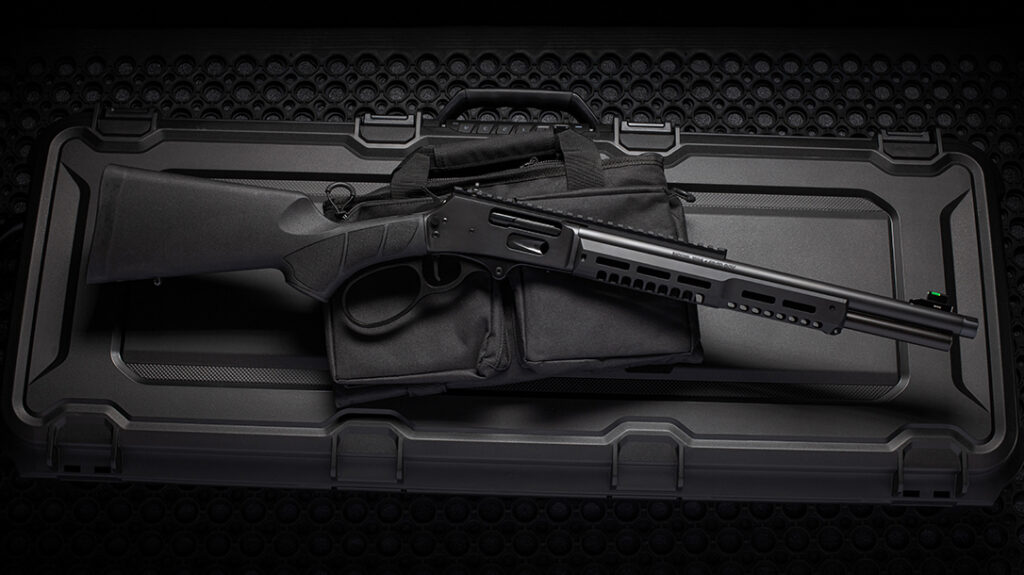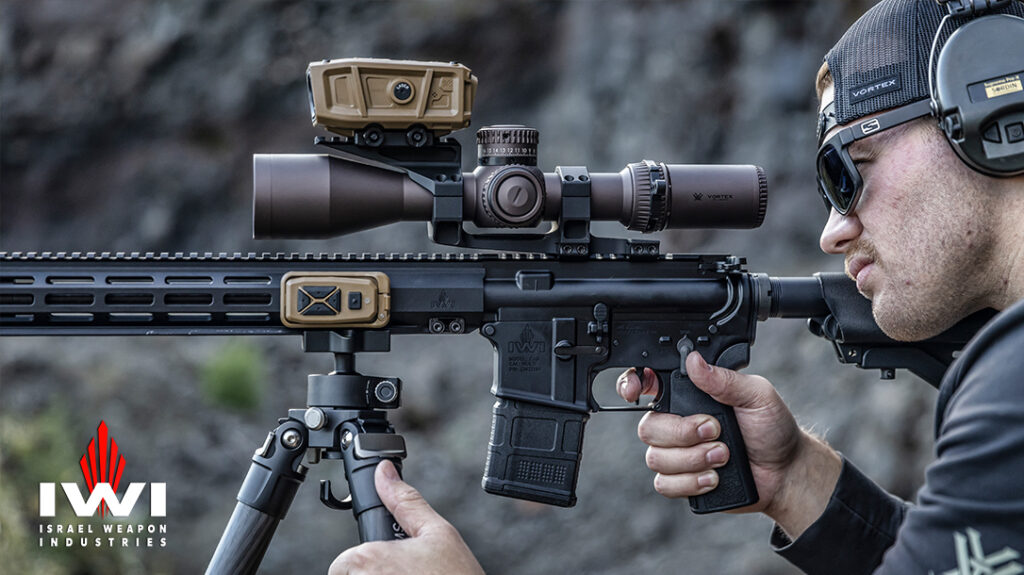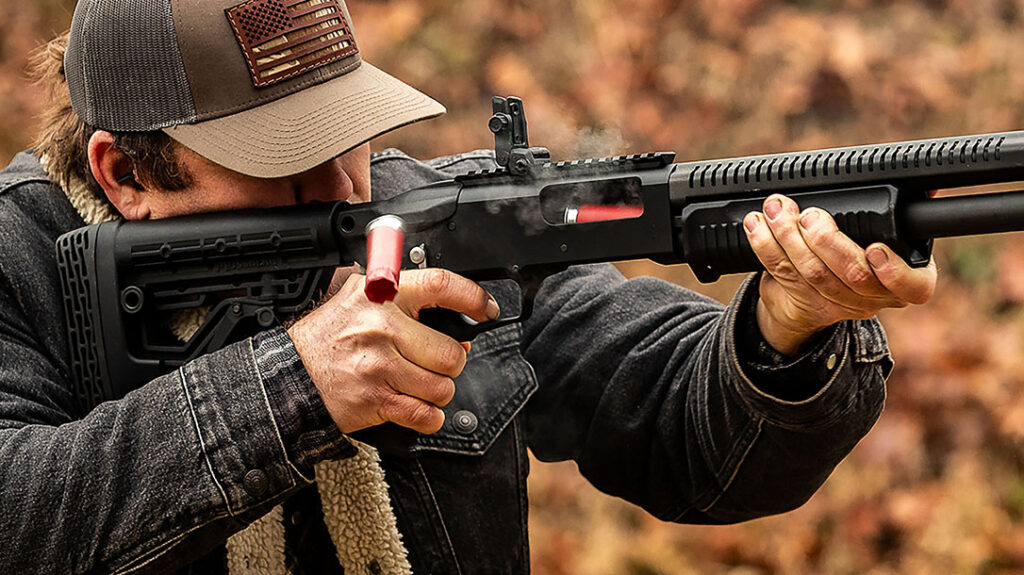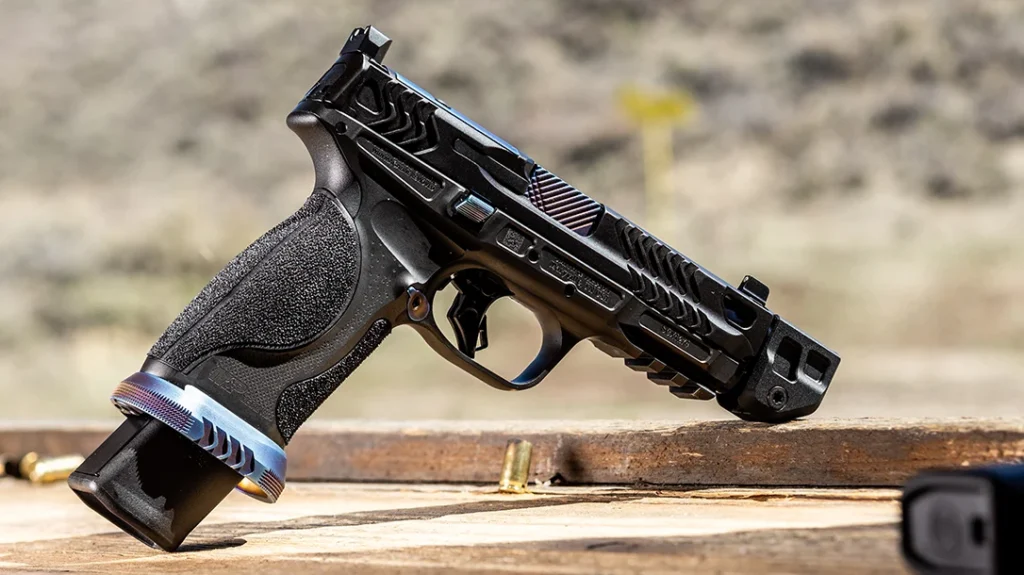Charter Arms has been making small-frame revolvers for over 60 years. I’ve been carrying and testing their firearms for some 46 years. They began making an affordable .38 Special, 5-shot, snub-nose revolver, called the Undercover. Since that time, they have expanded and now make 17 revolver models, with 105 variations. However, their newest model isn’t listed on their website yet. It’s a version of the Charter Arms Pathfinder series, called the Pathfinder Off-Duty.
The Charter Arms Pathfinder Off-Duty
The name designation for this revolver is unusual, but it makes sense. Traditionally, the Pathfinder line has consisted of wheelguns chambered in .22 LR and .22 WMR (Winchester Magnum Rimfire – Magnum for short). The Off-Duty line is limited to 2-inch barrel revolvers with a concealed hammer. Thus, the Pathfinder Off-Duty is a .22 Magnum that has a 2-inch barrel and a concealed hammer.

Advertisement — Continue Reading Below
Charter Arms elected to produce this model with an 8-shot cylinder. Correspondingly, to help reduce weight, the Pathfinder Off-Duty (PO-D) cylinder is double-fluted. Besides the wider flutes between chambers, the outer chamber wall also has a narrower, shallow flute. Only two other Charter revolvers share this feature.
Also unique are the black synthetic combat “Ribber” grips. They have horizontal ribs on the side rather than checkering or texturing, and include finder grooves. The synthetic material doesn’t cover the backstrap or butt of the grip frame, making them small. As a result, this translates to a more concealable handgun.
A Fit in the Lite Revolver Line
Although it’s not included in its name, the PO-D could also fit under Charter’s Lite revolver line. It is a hybrid with a frame made from a machined billet of 7075 aircraft-grade aluminum. The frame is black anodized, mated with a carbon-steel barrel, cylinder, crane/yoke, trigger, and thumb latch, which features a Blacknitride+ treatment. This gives the gun a business-like, non-reflective finish.
Advertisement — Continue Reading Below

One of Charter’s claims to fame is its solid frame, which features no side plate, thereby increasing strength. The action fits into the frame from the bottom and is covered by the grip-frame/trigger guard assembly. Cylinder lockup is at the crane/yoke and the breech face.
The 2-inch barrel has an integral shroud to protect the ejector rod. The front sight is a serrated ramp, while the rear sight has a wide square notch that forms into a trough in the top strap.
Advertisement — Continue Reading Below
Like all Charter wheelguns, the cylinder rotates to the right, and the thumb latch is pushed forward to swing the cylinder out for loading. The trigger has a smooth face and is 0.25 inches wide and contoured on the sides. Something new is the Charter Arms emblem, laser-engraved on the right side of the frame.
Ammunition and Leather Selection
Except for one load that is more hunting-oriented, the .22 WMR cartridges that I selected for the PO-D T&E are intended for defensive use. Some might scoff at a .22 Magnum snub for defense.
However, the late-great Bill Jordan opined in his book No Second Place Winner (on page 77) that the .22 Magnum “…is a wicked little cartridge and would add little to the weight of the light (revolver) models… and would make a wonderful addition to the ‘hide-out field…’”
Advertisement — Continue Reading Below
This was back in the day when Winchester had just introduced this cartridge, and bullet technology was nowhere near as advanced as we have today.
Feeding the Pathfinder Off-Duty
The newest .22 WMR defense load just came out, and J.J. Reich Sr., Media Relations Mgr. (Ammunition) at Vista Outdoor, rush-ordered some for me to get in this article. It’s a .22 WMR version of their Uppercut brand, which was introduced a few months ago in .22 LR.
This load carries a 40-gr. JHP bullet with a huge hollow nose cavity. The box says it’s “Optimized for Handguns” and has a factory-listed velocity of 1050 FPS. It also has a nickel-plated case.
Advertisement — Continue Reading Below
Hornady provided its .22 WMR Critical Defense. It’s loaded with a 45 gr. FTX bullet, which is a JHP with a synthetic plug in the nose. It is designed to keep material out of the hollow nose, yet allow for good penetration and expansion. It also has a nickel-plated case.

I also had a box of Remington Magnum Rimfire loads on hand that have a 40-gr. PSP (pointed soft point) bullet, and a brass case.
Advertisement — Continue Reading Below
A load I’ve used and carried before is the Speer Gold Dot (GD) Personal Protection Short Barrel load. It has a 40 gr. GD-HP bullet, and a nickel-plated case.
New to me is the Winchester .22 Win Mag Silvertip. It’s a 40 gr. silver-colored, jacketed bullet with an exposed lead HP nose. Correspondingly, it is loaded into a brass case. The box calls this a “Defense JHP Optimized for Handguns.”
Carrying the .22 WMR Revolver
To carry the Charter PO-D, I selected a well-used Galco Combat Master Belt Holster. This is a pancake-type, open-top-high-ride rig, made of premium steerhide. It has a butt-forward cant, full coverage, and two 1.75-inch belt slots. Mine is black in color.
Advertisement — Continue Reading Below

I mated it with a Barranti Leather SS Spare cartridge pouch. It has an open top, vertical carry, and allows you to pack extra ammunition in a speed strip on your belt. The pouch carries the strip with the bullets facing the rear. The tab is presented above the pouch mouth for easy access to your spare ammo.
Mine is also black, and four different belt loop sizes are available. My strip was a QuickStrip from Tuff Products; it carries ten .22 RF cartridges, but I loaded it with 8.
Advertisement — Continue Reading Below
Range Workout and Bullet Test
I took the Charter Pathfinder Off-Duty, ammo, and gear to my local Range USA for my T&E. First, I sent a bullseye target down to the 7-yard line. Then, I set up my Garmin Xero C1 Pro chronograph to get bullet velocities of the .22 WMR test loads through the Charter’s 2-inch barrel.
The average velocities were higher than I expected. However, the real surprise was the Winchester load that zipped out at 1267 FPS and had the muzzle blast/flash to go with it. All the figures are in the performance table (below).

I also noted the bullet point of aim/point of impact on the target I fired at. With a center hold, most bullet impacts were going 2-3 inches low and scattered. There were also some sideways impacts, aka keyholes.
Another thing I noted was the heavy trigger pull. It was off the scale on my trigger pull gauge and required a lot of “finger” to press it rearward until it tripped the sear, releasing the internal hammer.
Accuracy Potential
Given the Charter Pathfinder Off-Duty is DAO with a short sighting radius, I decided to do my accuracy potential evaluation at 25 feet. Shooting was done from the bench using my Ransom Steady Rest. Three 5-shot groups were fired with each of the .22 WMR test loads.
To put the cards on the table, this little revolver is best described as a “Belly Gun,” not a target handgun you’d use in competition. That said, the best 5-shot group measured 2.18 inches using the Winchester Silvertip load. To be honest, this surprised me.

Most of the “groups” had a flyer, and several had keyhole impacts, mainly with the Hornady and Speer cartridges. I ended up discounting these strays and measured the best 4 out of 5 shots. You can see the best group and average group information in the performance table (below).
It seemed to me, looking down the gun’s barrel, backlit with a tactical light, that the rifling was very shallow. Case sticking during ejection was also an issue. The nickel-plated cases seemed to have fewer hangups.
3/5/7 Course
For a practical exercise, I shot a 3/5/7 course. For the first run, I used a mix of the test cartridges and loaded the PO-D with eight rounds and the QuickStrip with eight rounds. An FBI Q-type silhouette target was used.
Shooting began at 3 yards, and I shot three rounds standing, strong-hand only. Then, I transitioned to the support hand and fired three more shots. The target was moved to 5 yards, and I fired the last two rounds using a two-handed hold and isosceles stance. Then, I dumped the brass, reloaded with the QuickStrip, and fired three more shots.
With the target moved to 7 yards, I maintained the same shooting stance and fired the last five shots as quickly as possible, while obtaining a flash sight picture. I had some keyholes and “wobble” impacts; all shots were in the “bowling pin,” but I didn’t like my performance.
I shot the course again, but this time I used only the CCI .22 WMR cartridges. This time, the 16 bullet holes could be covered with a paper plate and were centered around the ‘Q’ printed in the center of the target.

Ballistics Gel Test
Back home, I took a Clear Ballistics 10% Gel FBI Block out to my test laboratory (the backyard shed) for some bullet expansion evaluations. Then, I attached four layers of denim material to the front of the 6×6-inch, 16-inch-long block, as per FBI protocol. Shooting was done at a “Belly Gun” distance of 3 feet. None of the bullets made it through to the steel plate positioned behind the block.
Going in alphabetical order, the CCI Uppercut bullet penetrated to 11.25 inches, and the hollow nose formed a perfect mushroom. The Hornady FTX penetrated to 12.62 inches, and the skives in the jacket nose expanded out like petals. However, the synthetic plug stayed in place.
Remington’s PSP bullet went 10.75 inches into the gel, did not expand, and was recovered pointed backwards. The Speer Gold Dot HP made it to 12.87 inches and mushroomed nicely, with a bit of the denim material stuck in the nose. Winchester’s Silvertip bullet had the best penetration at 14.52 inches, but the bullet’s nose was only slightly flattened.
Given the FBI requires 12 to 18 inches of penetration, two loads didn’t make the minimum, two were marginal, and one went the deepest, but expansion was lacking.
The Pathfinder Off-Duty: A Close-In Defensive Wheelgun
Frankly, the Charter Arms Pathfinder Off-Duty is not for the person who doesn’t have a muscular trigger finger. My 70-year-old right index finger isn’t what it used to be. So, I had a heck of a time firing three shots using my left hand only.
My test gun came with eight orange plastic .22 dummy rounds. Perhaps loading them and dry-firing this revolver a few hundred times might help the action?
I found that opening the cylinder, turning the gun muzzle up, and pushing the ejector rod as hard as possible with my left thumb usually ejected all the empty cases. Maybe some more attention to chamber polishing would help?
Grip-to-grip frame fit was off at the top by 0.05 inches with a visible space between the inside of the grip and the side of the frame. This might be an issue with a harder recoiling cartridge. However, the .22 Magnum recoil was only what I’d call a “rap” to the hand, with minimal muzzle flip.
The wide rear sight and serrated front sight provided a good sight picture and were quick to pick up. The little Charter has potential as a close-in defensive handgun, if eight rounds of .22 WMR firepower suits your needs.

Charter Arms Pathfinder Off-Duty Specs
| Mechanism | Double-action only revolver |
| Caliber | .22 WMR (Magnum) |
| Capacity | 8 cartridges |
| Barrel | 2.0 inches |
| Overall Length | 6.25 inches |
| Empty Weight | 14 ounces |
| Sights | Fixed square-notch rear sight, serrated ramp front sight |
| Finish | Black |
| Stocks | Black Combat Ribber Synthetic |
| MSRP | $448.14 |
Performance
| CCI Uppercut Handgun Defense 40 gr. JHP | |
| Average Velocity | 1028 FPS |
| Best Group | 2.62 inches |
| Average Group | 2.82 inches |
| Ft-Pounds Muzzle Energy | 93.8 FPE |
| Hornady Critical Defense 45 gr. FTX-HP | |
| Average Velocity | 1076FPS |
| Best Group | 3.48 inches |
| Average Group | 3.72 inches |
| Ft-Pounds Muzzle Energy | 115.6 FPE |
| Remington Magnum Rimfire 40 gr. PSP* | |
| Average Velocity | 1109 FPS |
| Best Group | 2.23 inches |
| Average Group | 2.64 inches |
| Ft-Pounds Muzzle Energy | 109.2 FPE |
| Speer Gold Dot Personal Protection Short Barrel 40 gr. GD-HP | |
| Average Velocity | 1087 FPS |
| Best Group | 2.68 inches |
| Average Group | 3.18 inches |
| Ft-Pounds Muzzle Energy | 104.9 FPE |
| Winchester Silvertip 40 gr. Defense JHP | |
| Average Velocity | 1267 FPS |
| Best Group | 2.18 inches |
| Average Group | 2.62 inches |
| Ft-Pounds Muzzle Energy | 142.5 FPE |
NOTE: Bullet weight measured in grains, velocity in feet per second 15 inches from the muzzle by a Garmin Xero C1 Pro chronograph, and accuracy in inches for three 5-shot groups at 25 feet. FPE based on bullet weight and velocity. * PSP – Pointed Soft Point.
